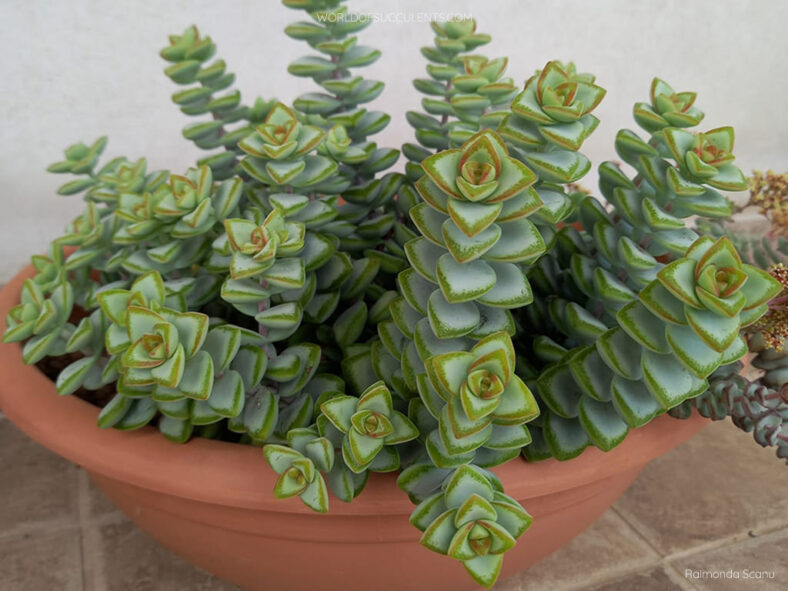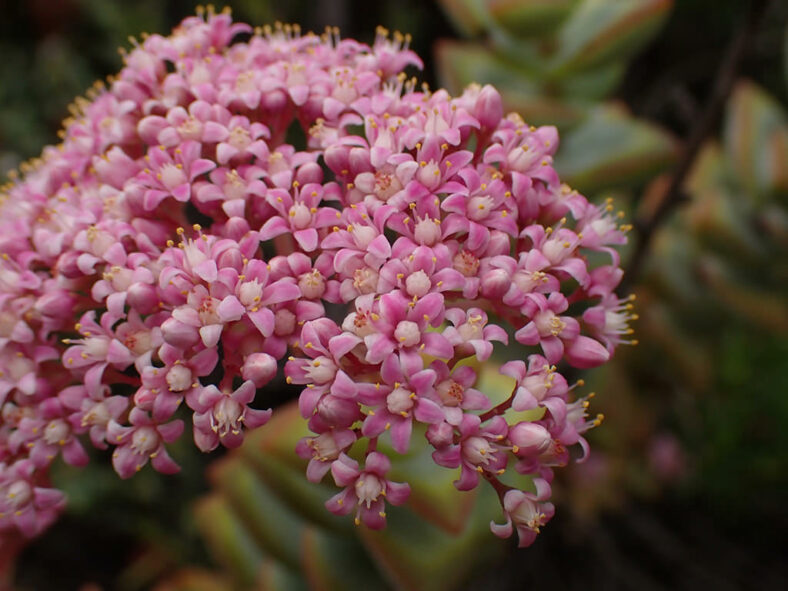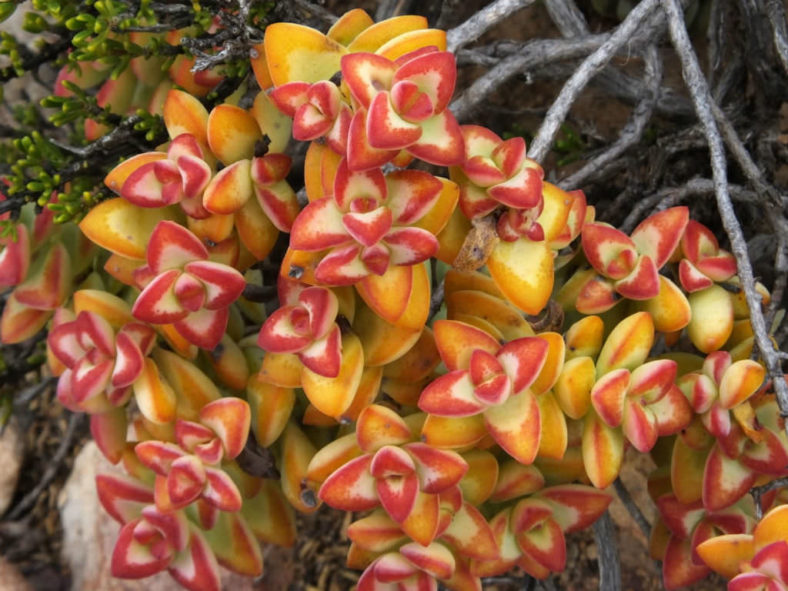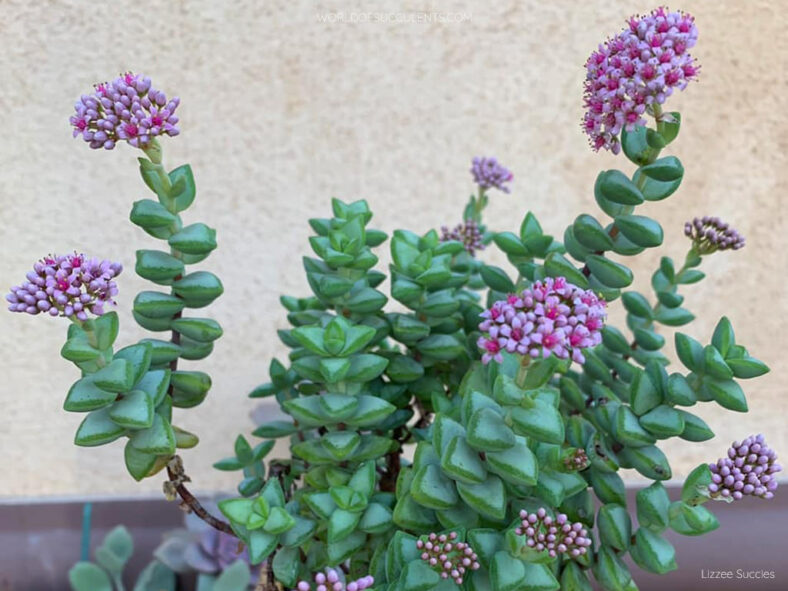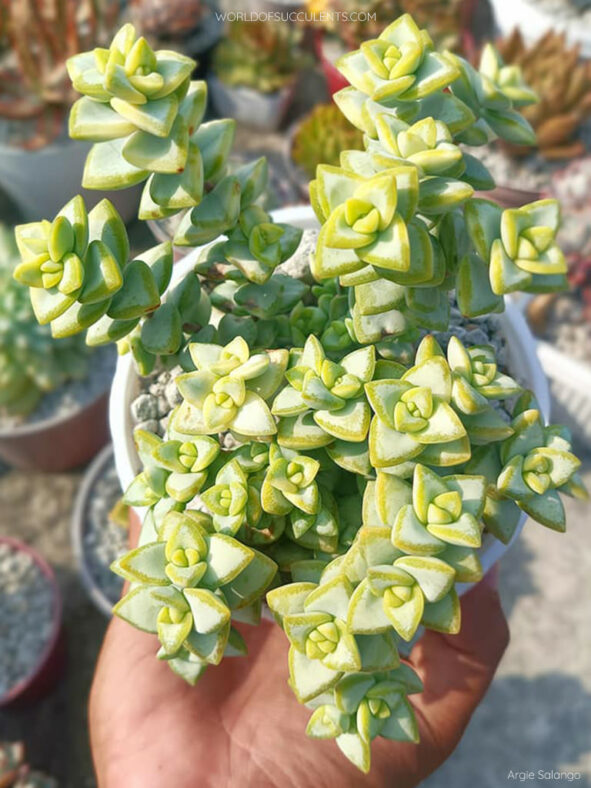Crassula rupestris is a recipient of the prestigious Award of Garden Merit of the UK's Royal Horticultural Society.
Scientific Name
Crassula rupestris Thunb.
Common Name(s)
Bead Vine, Buttons on a String, Concertina Bush, Concertina Plant, Concertina Stonecrop, Kebab Bush, Necklace Vine, Rock Crassula, Rosary Vine
Synonym(s)
Crassula monticola, Crassula perfossa, Crassula punctata, Crassula rupestris subsp. rupestris
Scientific Classification
Family: Crassulaceae
Subfamily: Crassuloideae
Genus: Crassula
Etymology
The specific epithet "rupestris (rue-PES-tris)" means "that lives on cliffs or rocks" and refers to the habitat of this species.
Origin
Crassula rupestris is native to South Africa. It grows on north- or east-facing, lower rocky slopes, in exposed positions among boulders, and on top of ledges from Vanrhynsdorp and the Cape Peninsula in the Western Cape to Grahamstown in the Eastern Cape province.
Description
Crassula rupestris is a succulent shrublet with leaves fused around erect, spreading, or rarely decumbent branches. It can grow up to 20 inches (50 cm) tall and is very variable in the size and shape of the leaves and how much their bases are fused. The branches are slender and slightly woody near the base, while the leaves are thick, fleshy, oval to lance-shaped, measuring up to 0.6 inches (1.5 cm) long and wide. The color of the leaves ranges from greyish-green to brownish-red or purple with yellow or brilliant red margins.
During the spring, the plant produces dense clusters of small flowers that vary in color from white to pinkish or reddish. The flower clusters are held on short stalks at the end of the branches and can reach a diameter of 2 inches (5 cm).
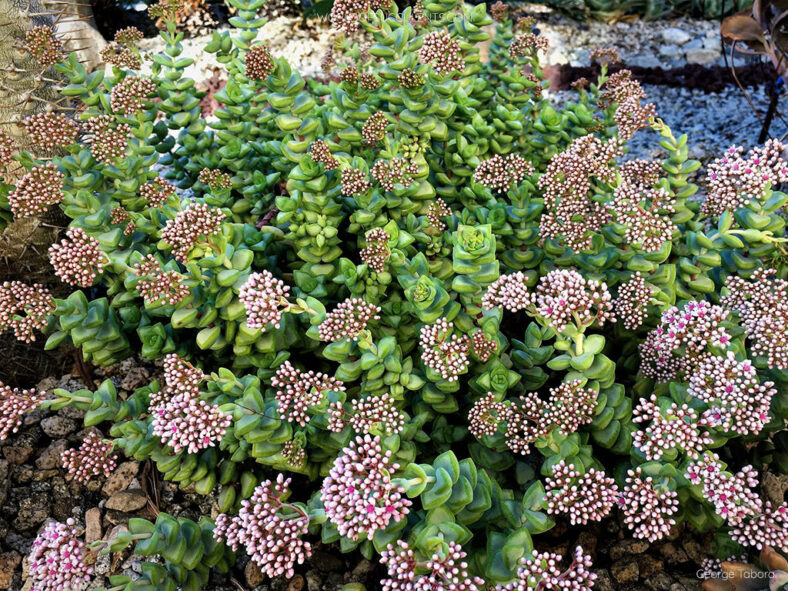
How to Grow and Care for Crassula rupestris
Light: Crassula rupestris prefers full sun to partial shade. However, avoid intense afternoon sun during the hot summer days, as it can burn the leaves. If growing the plant indoors, place it in a window with at least 6 hours of direct sunlight.
Soil: This plant is not particular about soil pH, but it does require soil that is very porous and has excellent drainage. You can use commercial soil mix for succulents or create your own.
Temperature: While this succulent can tolerate average summer temperatures and short-term freezing, extreme cold or heat can cause it to lose leaves and even die. Crassula rupestris grows best in USDA Plant Hardiness Zones 9b to 11b, with average minimum winter temperatures ranging from 25 to 50 °F (-3.9 to 10 °C).
Watering: Avoid overwatering using the "soak and dry" method to keep the plant healthy. Water deeply and then let the soil completely dry out before watering again. Reduce watering in winter. The potted plants require more frequent watering than those in the ground.
Fertilizing: While Crassula rupestris does not require high levels of nutrients, it will benefit from a small amount of organic fertilizer in mid-spring when it starts actively growing.
Repotting: Repot the plant as needed, preferably in spring, at the beginning of the growing season. Make sure the soil is dry before beginning to repot.
Propagation: This plant is usually propagated by leaves and stem cuttings. Using leaves is the easiest method, but stem cuttings produce larger plants more quickly. It can also be grown from seeds. The best time for propagation by cuttings is at the beginning of the growing season, while spring and summer are ideal for sowing the seeds.
Learn more at How to Grow and Care for Crassula.
Toxicity of Crassula rupestris
Crassula rupestris is considered non-toxic and is safe for growing around children and pets.
Subspecies, Varieties, Cultivars, and Hybrids of Crassula rupestris
- Crassula rupestris subsp. commutata
- Crassula rupestris subsp. marnieriana
- Crassula rupestris subsp. marnieriana 'Contorta'
- Crassula rupestris 'High Voltage'
- Crassula 'Bride's Bouquet'
- Crassula 'Green Pagoda'
- Crassula 'Silver Springtime'
- Crassula 'Springtime'
- Crassula 'Tom Thumb'
Links
- Back to genus Crassula
- Succupedia: Browse succulents by Scientific Name, Common Name, Genus, Family, USDA Hardiness Zone, Origin, or cacti by Genus
Photo Gallery
Click on a photo to see a larger version.
